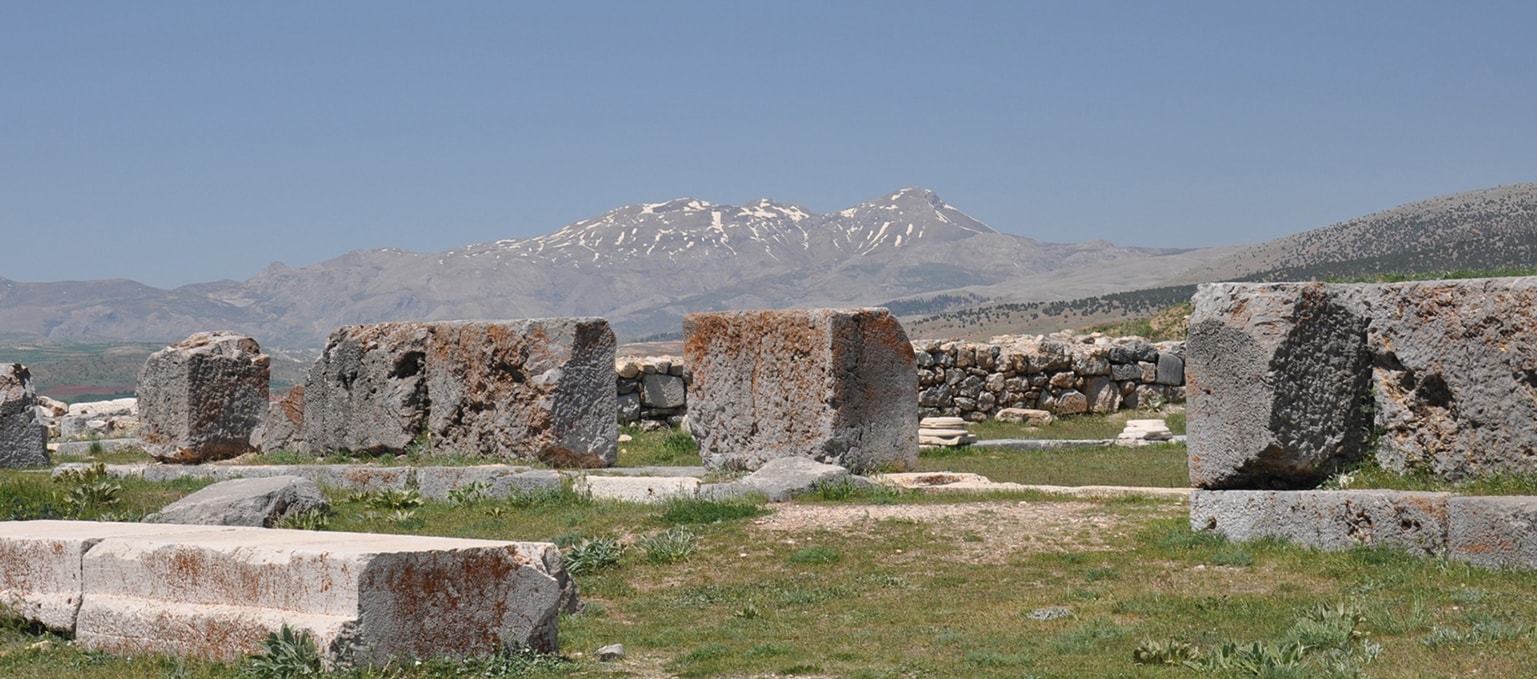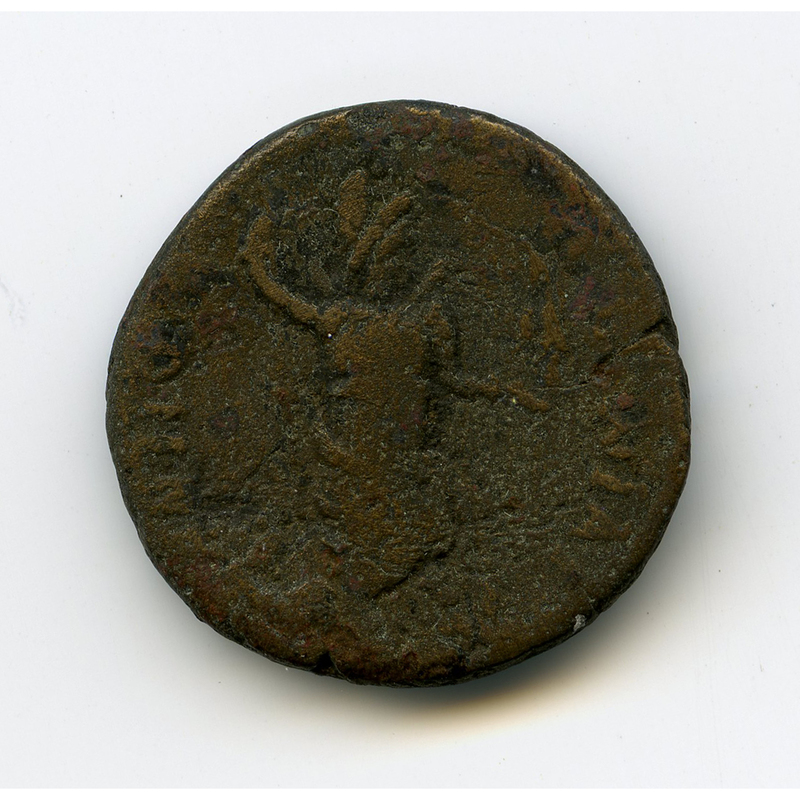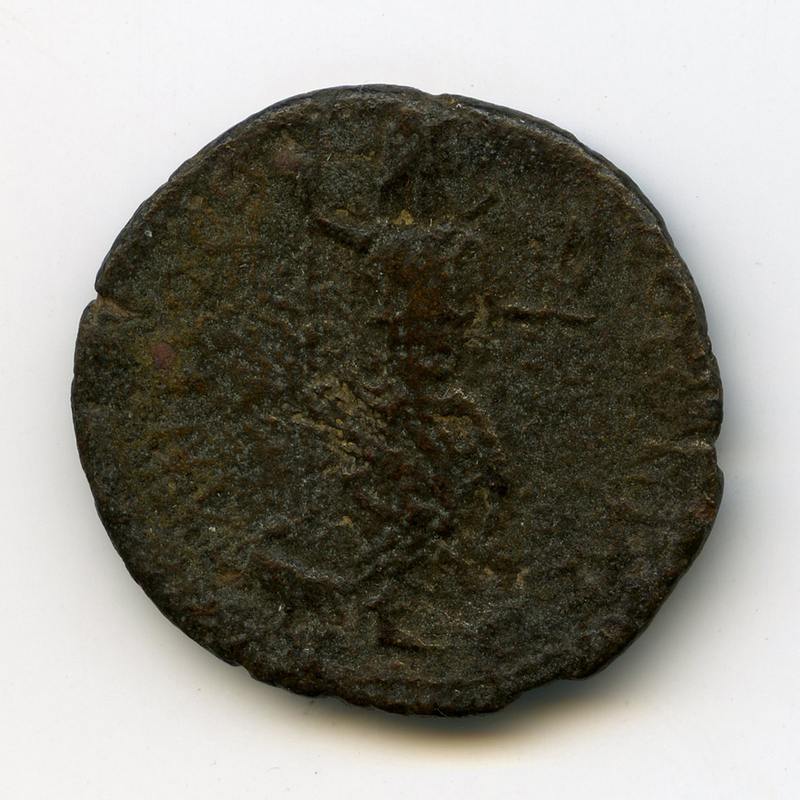Cult and Sanctuary of Mên
The coinage of Mên Askaênos is commonly depicted as this. The god stands facing right with left hand holding a scepter and right arm extended holding a statue of Victory. In the second image, a bucranium rests under the god's left foot and a rooster in behind the right foot. These are symbols to identify the god as Mên, whose depictions on coinage spiked in the Antonine period. These two examples are from the reign of Commodus at the end of the Antonine era.
The temple to Mên Askaênos and the surrounding temenos structure make up the Santuary. The temenos the wall around the temple complex and has a main entrance that faces the road. This floor-plan resembles that of other Greek sanctuaries in Asia Minor during the Hellenistic and Roman periods. While, Mên Askaênos is an Anatolian lunar deity, the temple itself shows the strongest structural similarities to Greek formulae.
Votive offerings found within the sanctuary that are made from expensive materials suggest Mên was patronized by the elites on Antioch. Additionally, the temple's location outside the city allowed it to serve the urban and rural communities both.
Dedications on the walls of the temple and offerings within reflect a culturally diverse audience with the god's name in Etruscan, Latin, Greek, and possibly Anatolian languages. This is evidence that the Cult of Mên was able to transcend cultural differences within a colonized population.



